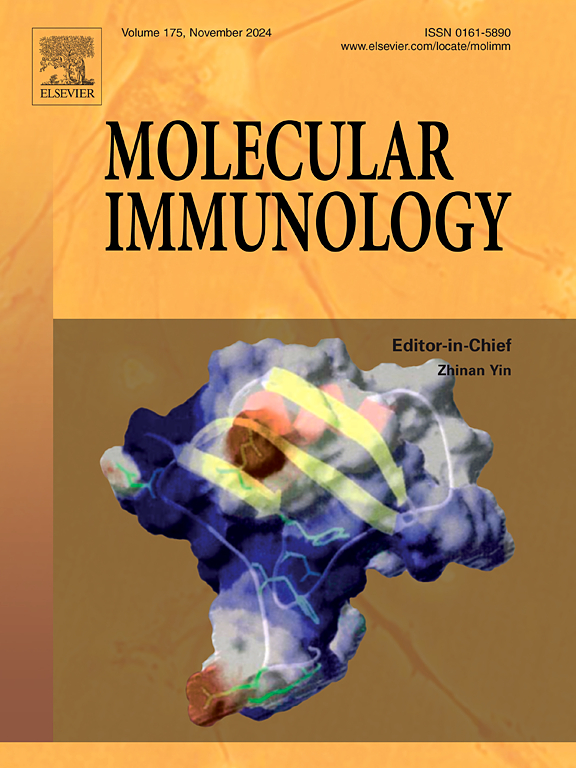Genetically engineered bacteria expressing IL-34 alleviate DSS-induced experimental colitis by promoting tight junction protein expression in intestinal mucosal epithelial cells
IF 3.2
3区 医学
Q2 BIOCHEMISTRY & MOLECULAR BIOLOGY
引用次数: 0
Abstract
Background
The intestinal mucosa of ulcerative colitis patients expresses high levels of interleukin 34, and mice lacking IL-34 have more severe DSS-induced experimental colitis. There are no studies on the effects of directly upregulating intestinal IL-34 on experimental colitis in mice.
Methods
The bacteria EcN/CSF-1 and EcN/IL-34, which express CSF-1 and IL-34, respectively, were genetically engineered from Escherichia coli Nissle 1917 (EcN). Colitis mice received daily gavage of sterile PBS buffer, empty plasmid E. coli (EcN/WT), EcN/CSF-1, or EcN/IL-34. Each group of mice was assessed for body mass, clinical signs, DAI, intestinal mucosal permeability, pathological, and immunohistological changes. In vitro, NCM460 cells were treated with CSF-1 or IL-34 recombinant proteins in the presence of signaling pathway inhibitors to evaluate tight junction protein expression. Additionally, intestinal mucosal epithelial cells isolated from active UC patients were analyzed for IL-34 and tight junction protein levels.
Results
DSS-induced colitis mice are protected by EcN/IL-34 gavage. Pathological results showed that EcN/IL-34 group colonic histological injury was significantly improved and tight junction protein ZO-1 and Occludin expression increased. In NCM460 cells, IL-34 also increased tight junction protein expression. More importantly, expression of IL-34 was positively correlated with the level of tight junction protein expression in epithelial cells of UC patients.
Conclusion
EcN/IL-34 can directly act on damaged intestinal mucosa, up-regulate IL-34 expression, and promote tight junction protein expression in intestinal mucosal epithelial cells to alleviate experimental colitis in mice. IL-34 may be a potential therapeutic target for ulcerative colitis, and genetically engineered bacteria carrying the cytokine may offer new ideas for treating UC.
求助全文
约1分钟内获得全文
求助全文
来源期刊

Molecular immunology
医学-免疫学
CiteScore
6.90
自引率
2.80%
发文量
324
审稿时长
50 days
期刊介绍:
Molecular Immunology publishes original articles, reviews and commentaries on all areas of immunology, with a particular focus on description of cellular, biochemical or genetic mechanisms underlying immunological phenomena. Studies on all model organisms, from invertebrates to humans, are suitable. Examples include, but are not restricted to:
Infection, autoimmunity, transplantation, immunodeficiencies, inflammation and tumor immunology
Mechanisms of induction, regulation and termination of innate and adaptive immunity
Intercellular communication, cooperation and regulation
Intracellular mechanisms of immunity (endocytosis, protein trafficking, pathogen recognition, antigen presentation, etc)
Mechanisms of action of the cells and molecules of the immune system
Structural analysis
Development of the immune system
Comparative immunology and evolution of the immune system
"Omics" studies and bioinformatics
Vaccines, biotechnology and therapeutic manipulation of the immune system (therapeutic antibodies, cytokines, cellular therapies, etc)
Technical developments.
 求助内容:
求助内容: 应助结果提醒方式:
应助结果提醒方式:


